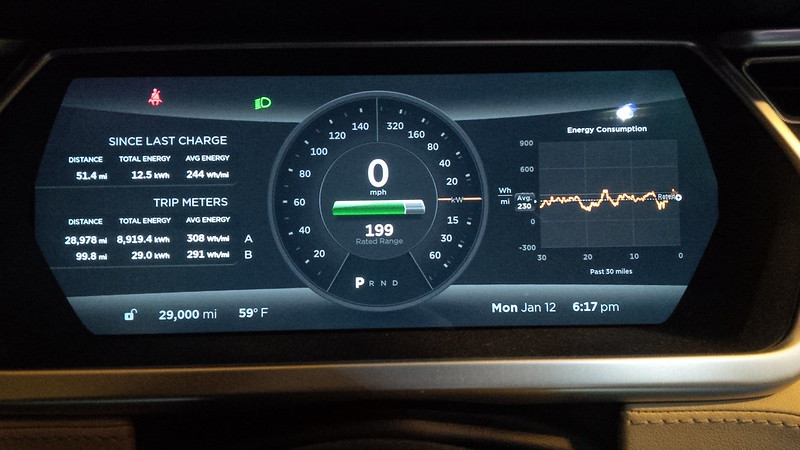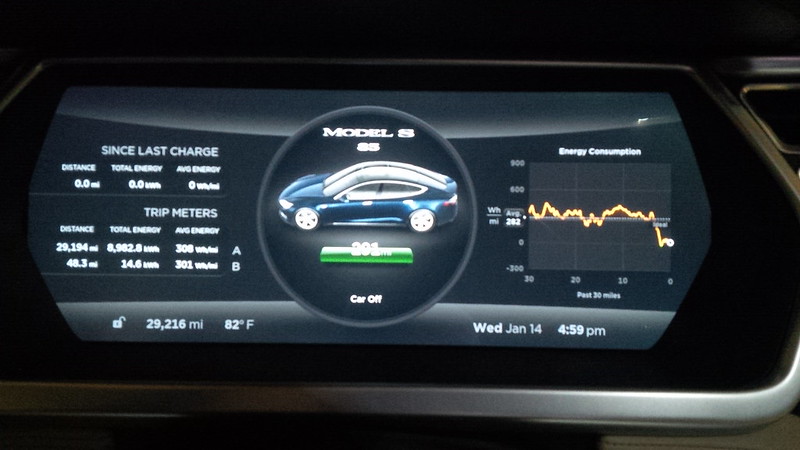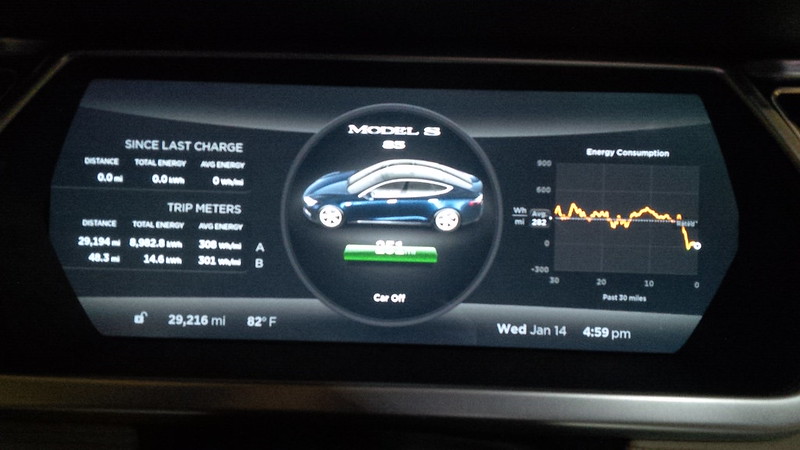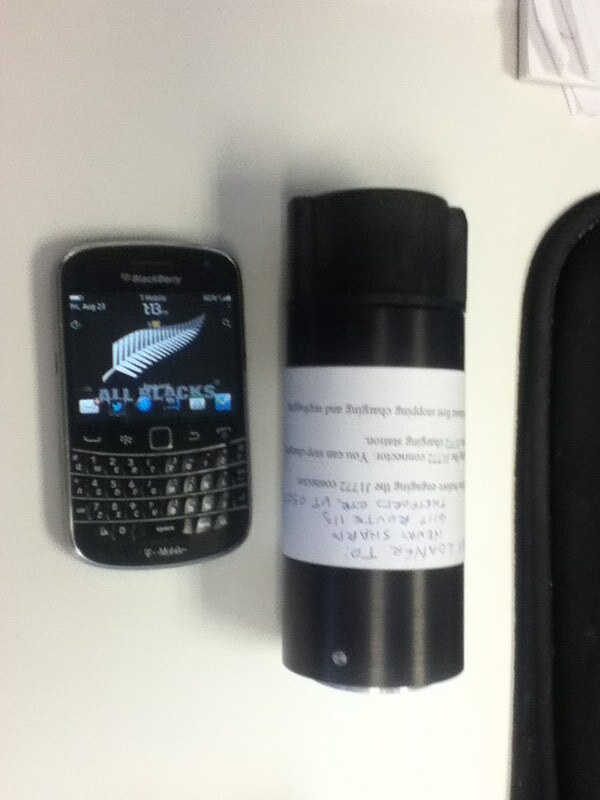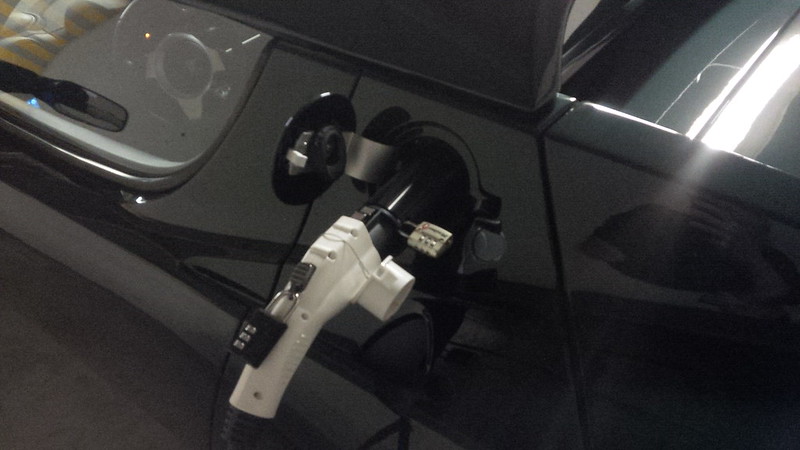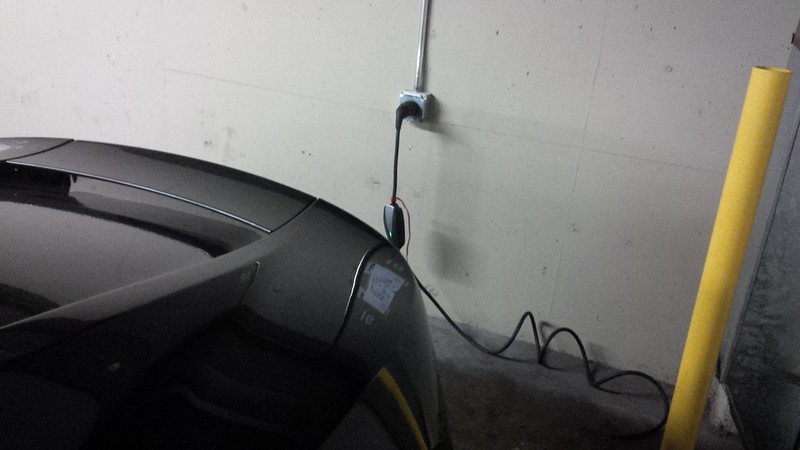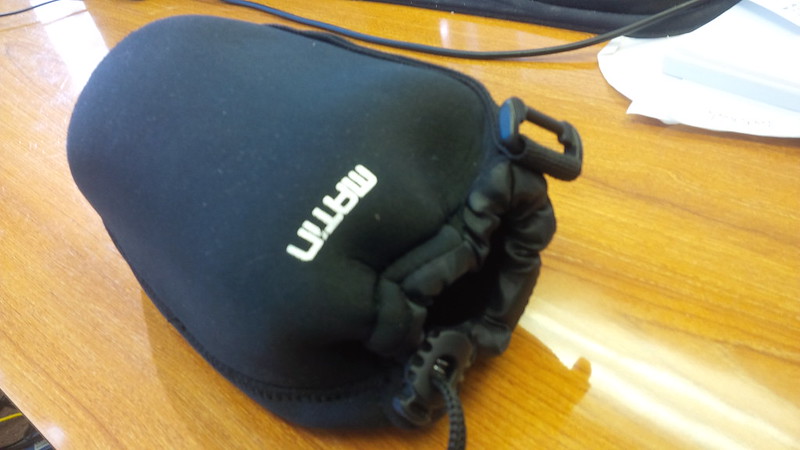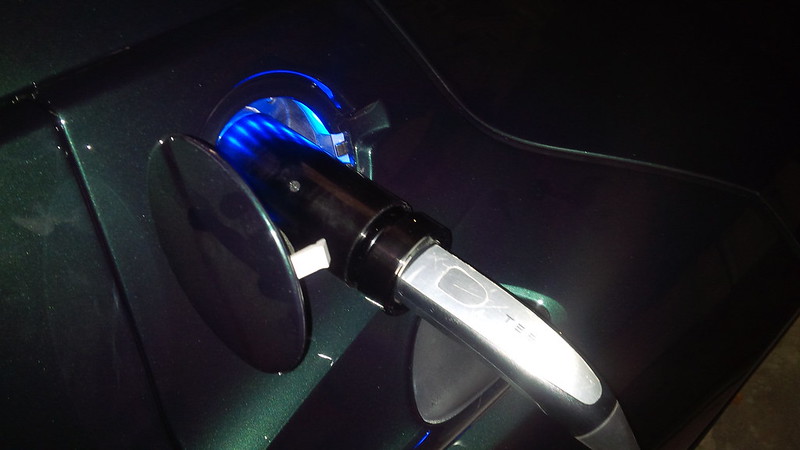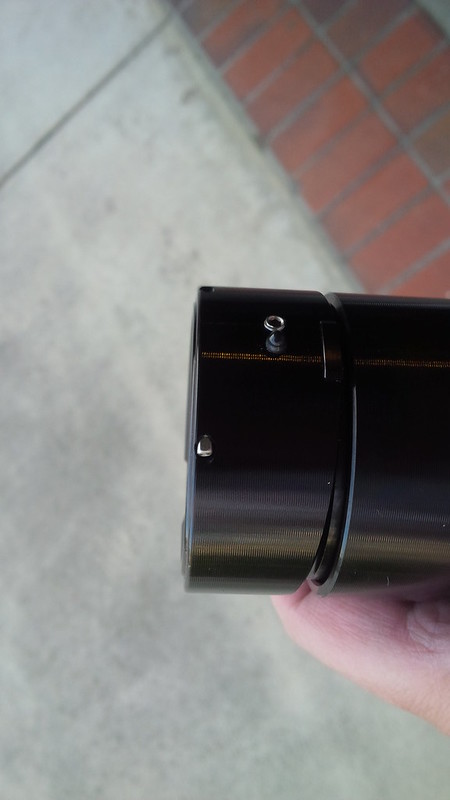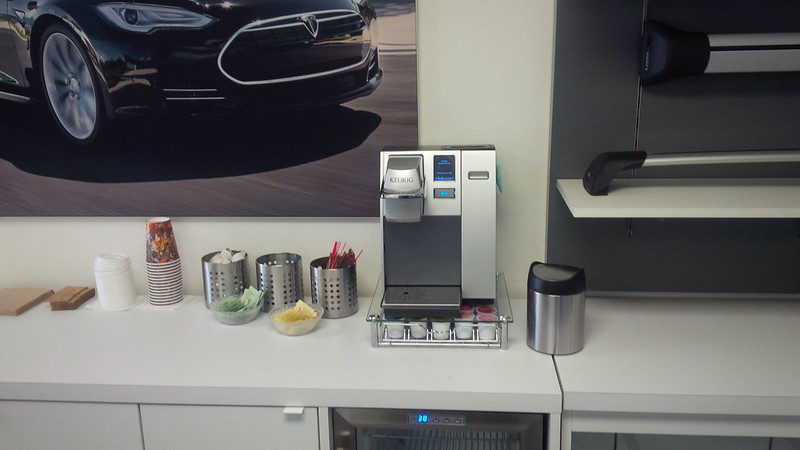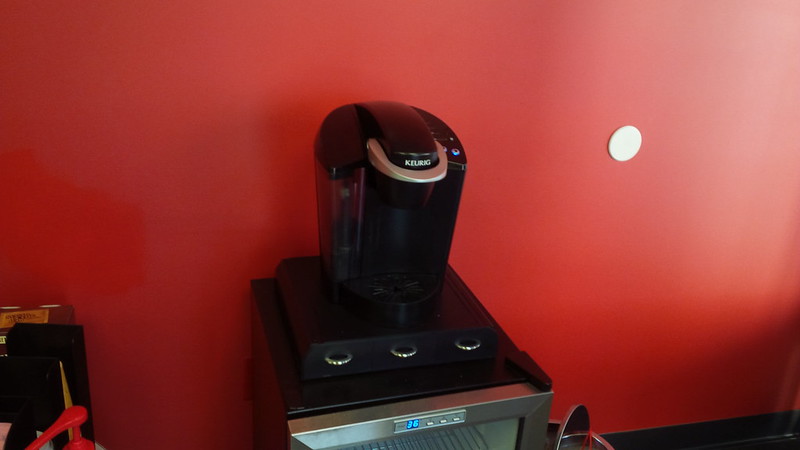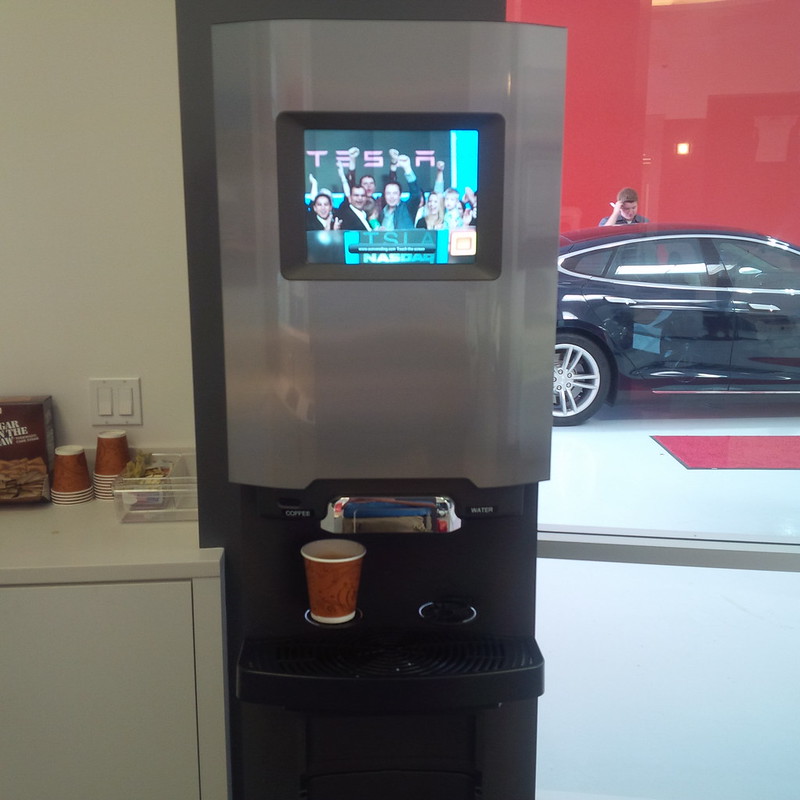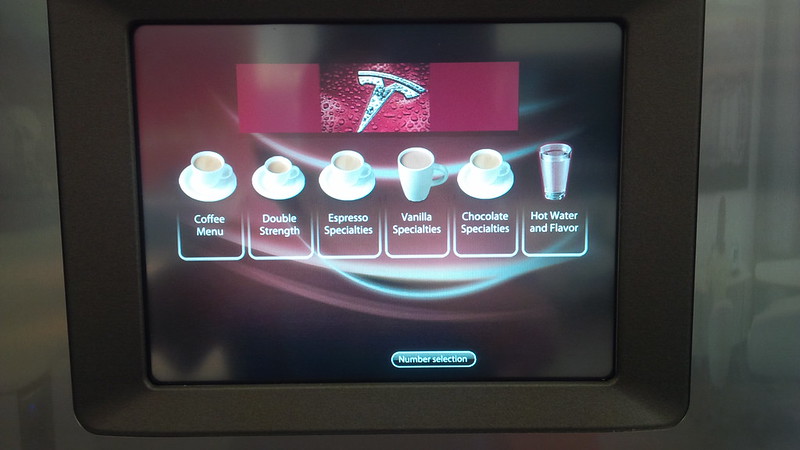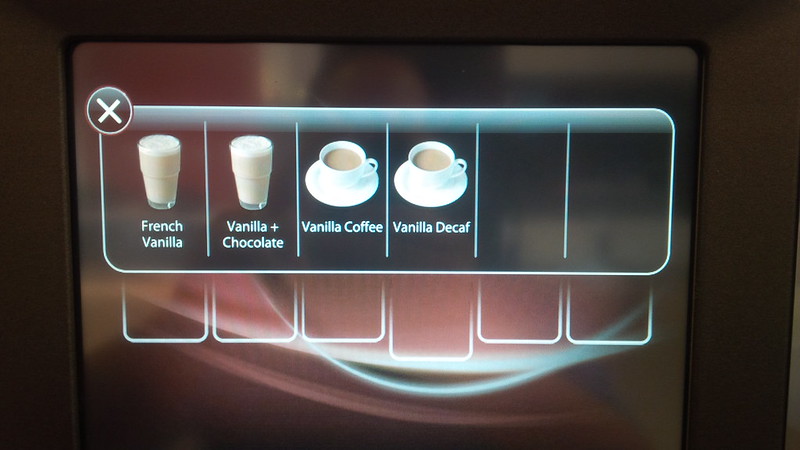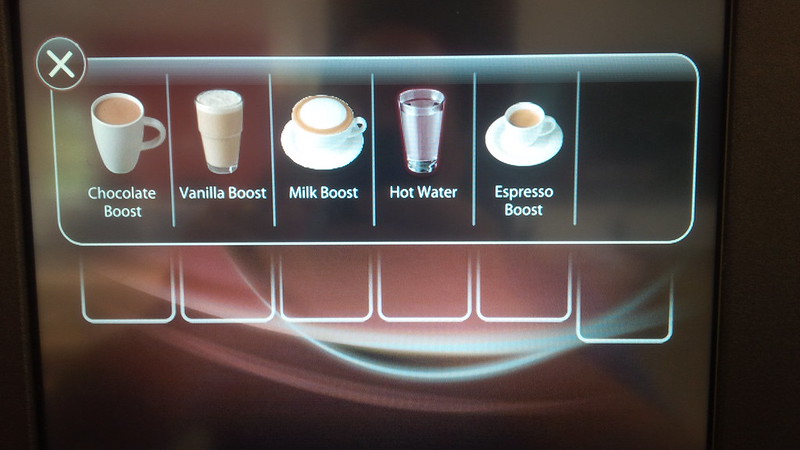So, the first 90% charge after the firmware of the Model S at 29,000 miles was updated from V6.0 (1.67.125) to V6.0 (2.0.81) and I was able to remotely verify that it was still holding at 226 miles for that charge. This is only a few days after the 29,000 Mile post (also, mileage is now 29,460).
Month: January 2015
29,000 Miles in the Tesla Model S
We’re getting to the point where we’re close to “doubling up” on the miles on the Model S than our Roadster. It’s got a lot more to do with the utility of a Model S vs. a Roadster as well as the number of miles that I drive for work.
The Model S is a 2013 that we picked up in November 2013 and the Roadster is a CPO that we picked up in September 2013. The Model S had around 20 miles when we picked it up and the Roadster had around 2200 miles when we picked that up.
They’re both great cars in their own rights and we’ve put in close to 15,000 miles on the Roadster at this point.
Ideal Miles – 291
Rated Miles – 251
The battery degradation on the car has shown its effect in the last few hundred miles. My 90% daily charge has gone down to around 226 Rated miles/261 Ideal Miles. Range charges in my most recent charge is 251 Rated miles/291 Ideal Miles. Most parts of the world, winter has a very noticeable effect on range. This is not normally the case in Southern California. With 291 Ideal miles or 9 lost miles. Doesn’t look bad vs 300 miles. But I live in a rated miles world and my 265 is now down to 252, so that sorta hurts, after all 13/265 is almost 5% of usable range gone vs. the Ideal loss around 3% (291/300) though this is also 4.6% (291/306).
I often charge the car to 90% on most days. The Roadster has a feature called “Top Off” that I mimic on the Model S. What that means is before I roll off, I extend the charge and run the pre-conditioning to cool the car and battery down. I wonder if that contributed to the degradation. Either way, there it is. Still waiting on Tesla to step it up and provide some sort of warranty and guidelines on what to expect.
If battery loss is linear, then should I expect 20% loss by 116,000 miles? Or is loss on a curve and 20% is closer to 150,000 or even 200,000 miles? Or is it accelerated and 5% loss is actually good for 29,000 miles. Not to mention the fact that I am measuring this based on Rated miles, which is what really works, but should I continue to normalize and look at Ideal miles, which may be ideal, but unrealistic. Because, as I’ve written, that’s currently closer to a 3-4.5% loss of Ideal miles.
Do I need to change my charging behavior? Because 9,000 miles ago, I was still range charged to 260 Rated miles. So, if we plot my two data points. I lost 5 miles in the first 20,000 miles and 8 more miles in the next 9,000 miles (Rated miles again). One thing to note is the car has been constantly updating with new firmware. So, one needs to wonder if these losses were already in the car and that changes in the rated mils is because of firmware changes and “fine-tuning of the algorithm. If it’s based on our driving, I’ve been rather conservative over the past 29,000 miles. My average since we picked up the car has been 308 Wh/mile (see the Trip A meter on any of the three pictures.)
Perhaps I should charge the car less and let it dip below 100 miles more often. Some guidelines from Tesla really would help here. In the meantime, we’re saving for replacement battery packs for the Roadster and Model S. Even without some sort of guidelines on what that will cost, the recent 400 mile Roadster upgrade announcement makes me hopeful that the same, or at least a replacement pack price will be announced for the Model S when our pack drops down to a level where either something kicks in to replace it or it gets unbearable and we decide to replace it ourselves. Tesla Gigafactory anyone?
As I’ve mentioned before, c’mon Tesla be AWESOME again! Publish a Battery Degradation Warranty that we can count on or at least start to provide pricing on replacement Model S packs for folks to start saving up for.
[UPDATE 2015-01-17]
I’ve been asked several times on social media as to the firmware at the time of the publication of this post.
It is V6.0 (1.67.125). The car is actually going in for a patch to fix an unrelated bug with regard to the clock switching from 12h AM/PM to 24h seemingly randombly.)
The CAN JR and The CAN SR… Must have accessories for the Tesla Roadster
Elon Musk and Tesla Motors tweets regarding the upcoming demonstration of upgrading the Tesla Roadster to a 400 Mile Range has increased the interest in Roadster ownership. To continue further the previous post upon receipt of the CAN SR a few days back. Each version of the CAN is sold for $695 each and is well worth it.
What makes the CAN from Henry Sharp a valuable accesory is that it allows Roadster owners a nicer/smaller adapter to standard J1772. The Tesla produced product is rather bulky and a car like the Roadster space truly is a premium.
Here is a photo from Tesla (from their shop) of the Tesla produced adapter.

Whereas the CAN from Henry Sharp is rather compact.
This first picture is the J1772 side that the Roadster driver uses to plug the J1772 into.
This second picture is the Roadster side that the Roadster driver uses to connect to the Car.
You can see that the CAN is not much larger than a Blackberry Curve Telephone.
And here is the CAN attached and charging a Roadster. To ensure that the CAN does NOT walk away at public stations, there are slots in place to place a small padlock into it.
It works great with the JESLA from Tony Williams of QuickChargePower.
Henry’s been making the CAN JR for a while and have just released the CAN SR. The naming convention of JR and SR means that he’s converting J1772 to Roadster (for the JR) and SR is converting Tesla Model S to Roadster. Henry reluctantly released the SR because the testing showed a 95% success factor for Roadster 2.x and 99% success with Roadster 1.5 between Model S Chargers and Roadsters. (you can read the SR thread on teslamotorsclub.com)
Before purchasing the CAN SR, I would highly recommend that Roadster owners get the latest Firmware upgrade. There is a known bug between unpatched Roadsters and EVSEs that charge greater than 70 Amps. A fully configured Tesla Model S HPC is configured to run at 80 Amps and the Roadster, if unpatched, would be confused by that issue. The patch for this error has the Roadster understand an 80 Amp signal and drop the rate to 70 Amps, which is the maximum speed that a Roadster can handle.
This next picture is the Model S side that the Roadster driver uses to plug the Model S nozzle into.
This once again is the side that plugs into the Roadster.
Henry sends each CAN with a neoprene bag to protect and store the adapters into as pictured.
Here is the CAN SR plugged in and getting ready to charge in our garage.
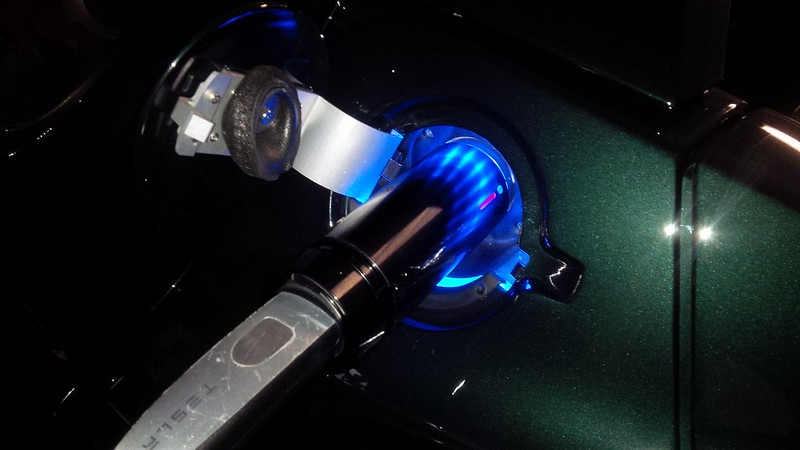
Lastly you can see the detail of the construction of the CAN SR. It’s a great accesory.
So, how do I use these adapters.
For the CAN JR
1) Attach the CAN JR to the Roadster
2) Plug the J1772 into the CAN.
IF in a public charging spot
3) I insert the padlock into the slot for the CAN to lock it in place.
4) If I need to interrupt charging to leave, I press the stop charging button on the VDI of the Roadster OR stop on the charger, otherwise, if it IS stopped, then proceed to the next steps.
IF in a public charging spot
5) I take the padlock off.
6) Unplug the J1772
7) Unplug the CAN, put can in the bag, and put the bag in the Roadster.
For the CAN SR
1) Attach the CAN SR to the Roadster
2) Plug the Model S nozzle into the CAN.
IF in a public charging spot
3) I insert the padlock into the slot for the CAN to lock it in place.
4) If I need to interrupt charging to leave, I press the stop charging button on the VDI of the Roadster OR stop on the charger, otherwise, if it IS stopped, then proceed to the next steps. I have not yet tried this, but according to Henry, I can pull the ring around the Model S nozzle to stop charging as well.
IF in a public charging spot
5) I take the padlock off.
6) Unplug the Model S adapter.
7) Unplug the CAN, put can in the bag, and put the bag in the Roadster.
There are very few “must haves” for the Roadster, and the CAN JR and SR are two of the things Roadster owners should consider owning.
Just got “The CAN SR”… A must-have “accessory” for the Tesla Roadster
A more in-depth review will follow, but thought to just share some pictures with you…
The CAN SR is Henry Sharp’s latest iteration of the CAN... (now renamed the CAN JR). The SR designates that the adapter will change a Tesla Model S plug to work with a Tesla Roadster. Whereas the original CAN adapted J1772 to Tesla Roadster.
Just got this at the office and thought to post some pictures of it.
Here is the end that the Model S connector goes into.
Here is the end that connects to the Roadster
And here is the whole thing in the protective bag that both the original CAN (JR) and now the CAN SR is sold with.
Per the Teslamotorsclub.com forum posts on the subject, it looks like it should work with about 99% of Model S Chargers out there for 1.5 Roadsters and about 95% for 2.x Roadsters.
Inconsistent Tesla Service at Tesla Service Centers… (make that Coffee service)
…You’ve been click baited! 😉
I’ve had service on our cars done at pretty much all the Los Angeles and Orange County service centers open by the end of 2014.
And I’ve found that the coffee service at all the centers have been inconsistent.
So, what are the levels of coffee service at the centers? I have it in three levels.
The first level can be found at the (old, pre-late 2014) Costa Mesa, Torrance, and Van Nuys location. And we’ll call this level the Good level of coffee service. I enjoy K-Cups and these centers all used a well stocked, well maintained K-cup machines.
Here are pictures from Van Nuys and Torrance:
Torrance:
Van Nuys:
The previous Costa Mesa Service Center had similar machines as well.
The second level first debuted in the Los Angeles and Orange County service center areas at the large West Los Angeles Service Center on Centinela. I would call this the Better level of coffee service. These are similar to the automated espresso/coffee machines found at some airport lounges.
The same machine that debuted in Centinela is pictured here from the “new” Costa Mesa Service Center.
In fact, if you don’t like coffee… These machines can also do Hot Chocolate
Or perhaps you DO like different kinds of coffee and coffee drinks
or just coffee
each of these options can be “boosted”
However, what I’ve found is that the First one in the area continues to be the best one.
The original Service Center in West Los Angeles provide customers with the locations’ own Starbucks Gift Card to use to go and purchase Starbucks coffee from next door.
Now, this center continues to be rumored to be closing soon and be re-converted back into a showroom. So, until then, if you like Starbucks coffee and rate that as I do… Then, perhaps you would consider having your Tesla serviced at the West Los Angeles (Santa Monica Blvd.) location.
